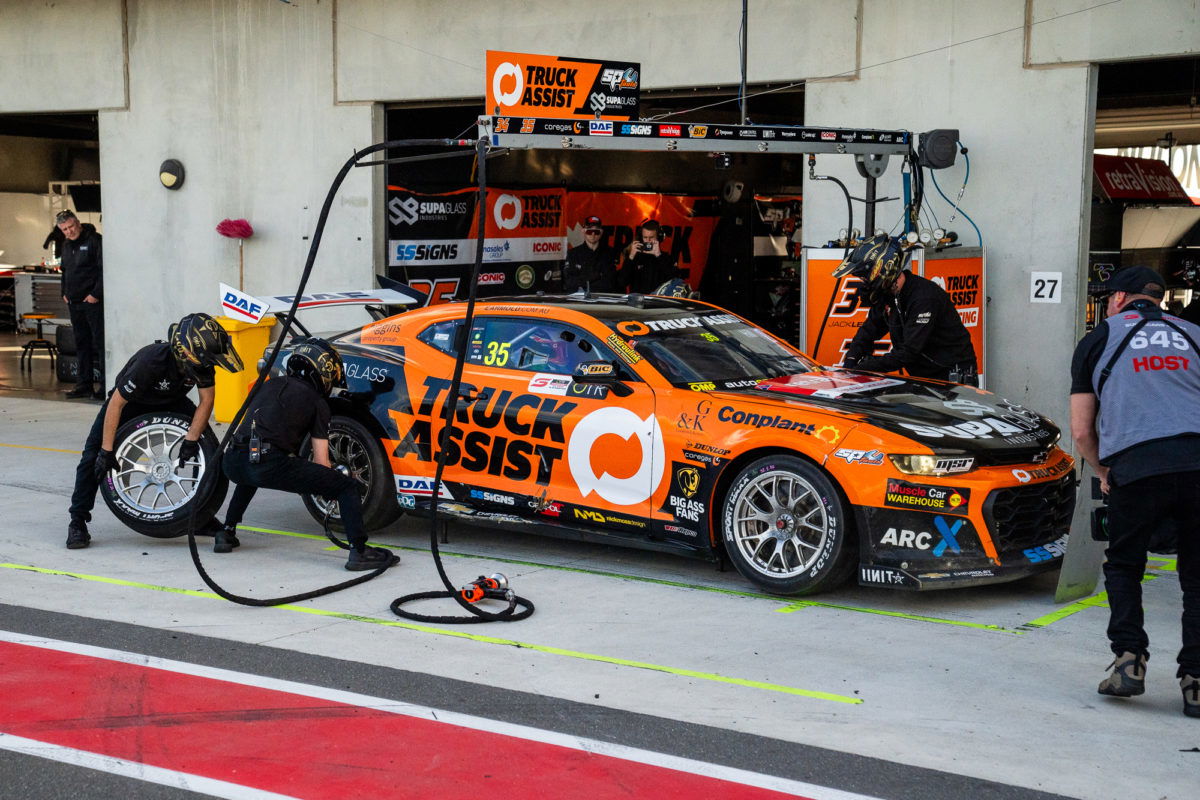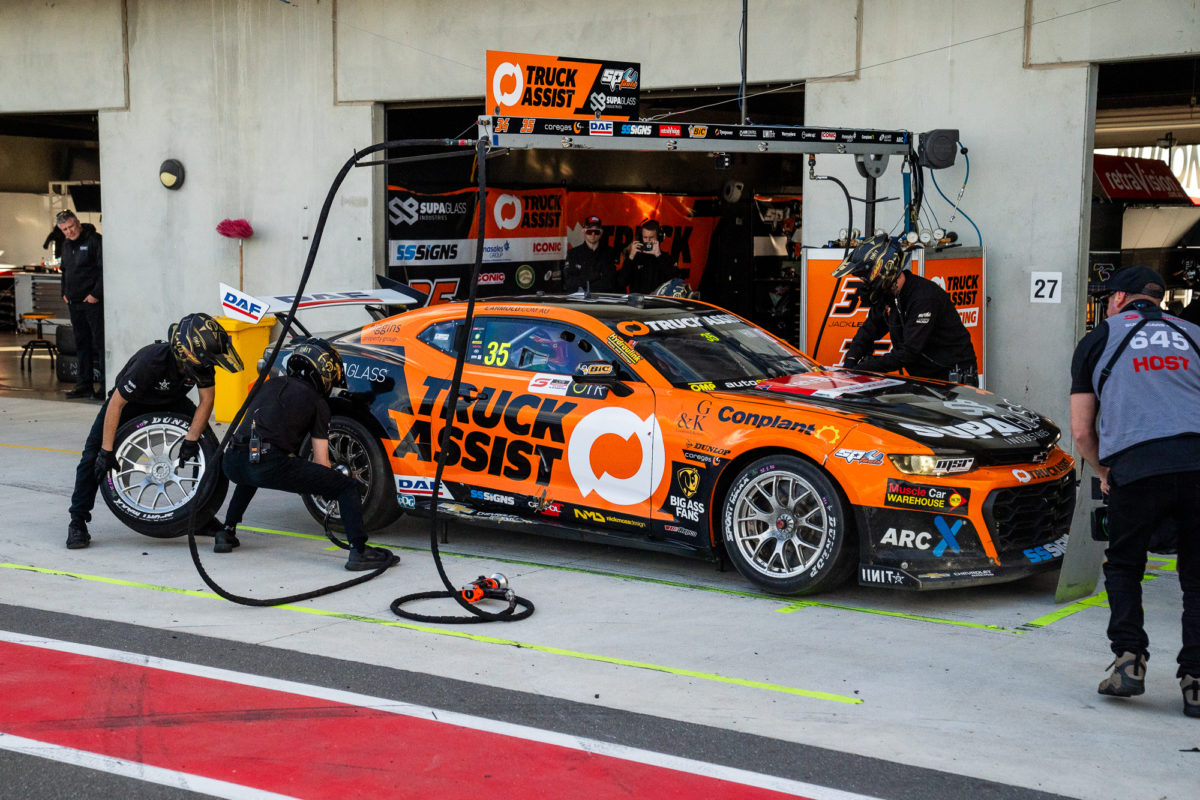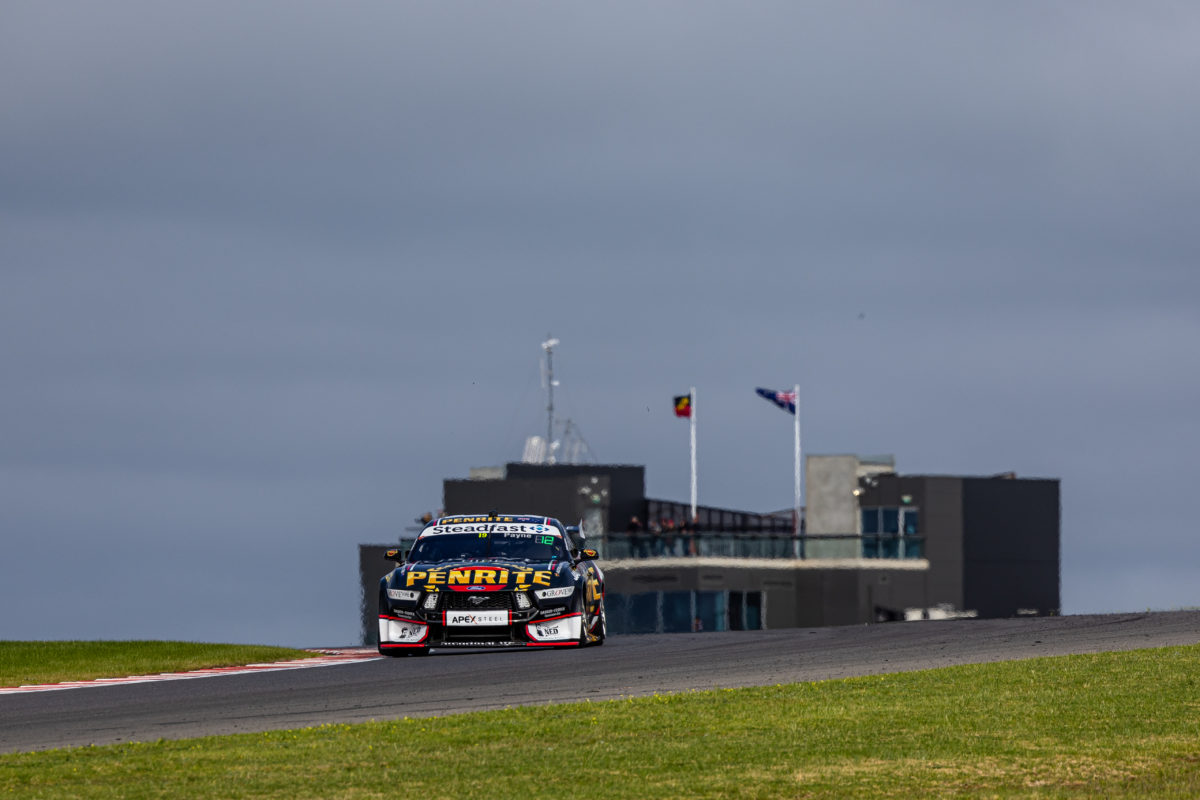

Fire has been raised as a possible risk for the Sandown 500 and Bathurst 1000 given the length of pit stops in the Gen3 Supercars era.
Fuel stops have been part of events this year at Newcastle, Townsville, and Sydney, but none of those races were any longer than 250km and hence no team has filled a tank from empty during a session so far this year.
That is set to change next time the field races, at Sandown on September 17 and then at Mount Panorama on October 8, although no specifics have yet been advised with respect to compulsory pit stop counts, and tyre wear may well also be a strategic consideration.
Still, with the usual modus operandi being to strategise backwards from the end of the race, it is likely that teams will be planning a full fill for at least their last pit stop.
Matt Stone, owner of the eponymous Yatala-based team, does not believe mechanical sympathy will be required from drivers despite the Gen3 Supercars seeming somewhat fragile.
However, he has identified the risks of heat soak and even potentially fire in a long pit stop, based on the experience in Sydney.
Then, the aggregate fuel drop was 80 litres, but capacity of a Gen3 fuel cell is 133 litres and the flow rate from the fuel rig is somewhere around 2.5 litres per second.
“We haven’t seen any components that can’t do a thousand kilometres,” Stone told Speedcafe.
“We’ve had one part failure that, I guess, you’d call a warranty control problem that did fail, but even that was more than a thousand kilometres.
“I know a few other people have had similar things – things that have failed on kilometres – [but] nothing I’ve seen would suggest that these cars can’t do a thousand kilometres in anger.
“The fuelling’s going to be interesting, sitting stationary for 60 seconds.
“If you look at Sydney, people that single-stopped it did about a 28-second pit stop and the guards were just about on fire.
“So, coming in, big last stop [brake application] before you pull in the pits at Sandown, and then sitting stationary for a minute, I think fire is going to be a feature.
“We’re less worried about the car making the distance and more worried about the car sitting stationary four times with the amount of heat soak and what damage that might do.
“So, that’s what our testing will be around; rooting out those problems.”
The Truck Assist Racing owner added, “No one’s done a 60-second pit stop with a hot car yet. It may amount to nothing, it may just be a lot of smoke… It’ll definitely be smoke, and hopefully there’s not fire where smoke was.”
Gen3 guards are now coated in fireproof paint after the blazes at Albert Park, although that does not eliminate the prospect of heat soak damaging other components.

As for what damage drivers could cause, Grove Racing Team Principal David Cauchi does think a return to mechanical sympathy could be on the cards.
“That is a possibility, yes,” he told Speedcafe.
“So far, these cars haven’t been as robust in certain areas, so that is absolutely going to be part of it.
“We don’t know things like the braking system and where it’s going to end up after that amount of kilometres.
“The pace of endurance races for the last few years has been a sprint and Bathurst has become a sprint – it used to be a cruise until the last two stints – so it’s pretty flat-out, the pace has been incredible, but it’ll all get readjusted and we’ll be learning on the fly.”
Pre-enduro testing begins on Monday, with Grove using an ‘Evaluation Day’ to give Porsche World Endurance Championship driver Kevin Estre his first laps in a Supercar before he pairs up with Matt Payne in the #19 Penrite Mustang at Sandown and Mount Panorama.




















Discussion about this post